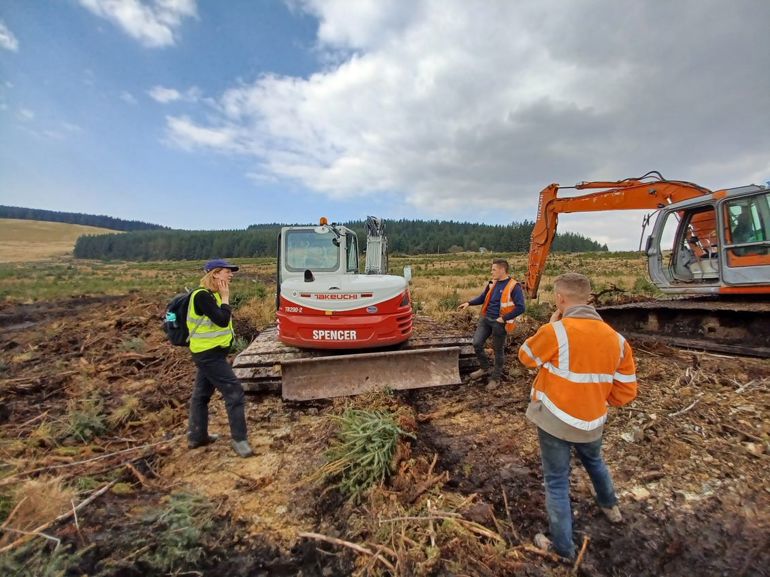For Peat’s Sake!

Talk about the natural resources of Wales and one of our most valuable resources, as we attempt to decelerate climate change, is peat. Seemingly humble, pliant, and unadorned, peat has had rather a Cinderella presence in the climate action story book. Yet, if we follow the science, showing both the negative impact of damaged peatland and the vast potential for carbon retention of restored peatland, NRW is determined to bring peatland restoration out of the shadows!
Update 10/11/2022: Round 2 of the Development Grant is now open from 8/11/2022 to 8/2/2023, for further information see the Peatland web page.
Now in its second year, the National Peatland Action Programme (NPAP) shines a timely light on Welsh solutions to address climate change and biodiversity depletion. In unison with the input of landowners, farmers and contractors, the impact of the peatland restoration programme is becoming increasingly evident.
Funding to get started...
Yet, taking the initial steps towards peatland restoration can be daunting for a farmer, landowner, or community group. It’s exciting, therefore, to see the launch of a development grant aimed at helping projects onto the first rung of the peat restoration ladder. The £10-30K grants will fund the initial development work required to prepare for a viable peatland restoration project in subsequent years. Completed by March 2023, it is hoped that the development grant projects will lead to subsequent restoration work 2023/4, potentially funded through NPAP or other funding streams. All the information, including a link to register for the guidance webinars on the 26th and 27th of April, can be found on the NPAP page here
Keeping tabs on Peat!
Whether applying for funding or not, not to be missed is another recently launched and accessible all-Wales peat map resource. Immense in its ambition, in April 2022 a new one-stop-shop Welsh Peatland Data Portal was launched.
Found here, the multi-layered Peatlands of Wales Map is an open resource with information for the public, landowners, and specialists alike. It reveals the extent and depth of Welsh peatlands, including information about how much carbon is stored, or sadly, in the case of damaged peatland, how much is released. There are also fascinating data layers regarding habitat and species. The Map will be updated regularly, to show an ever-improving picture of the habitats’ recovery through conservation management.
A minute to midnight on the ecological clock and it’s high time for us collectively to enable peat to play its part in achieving our universal goals of #HighNatureLowCarbon
